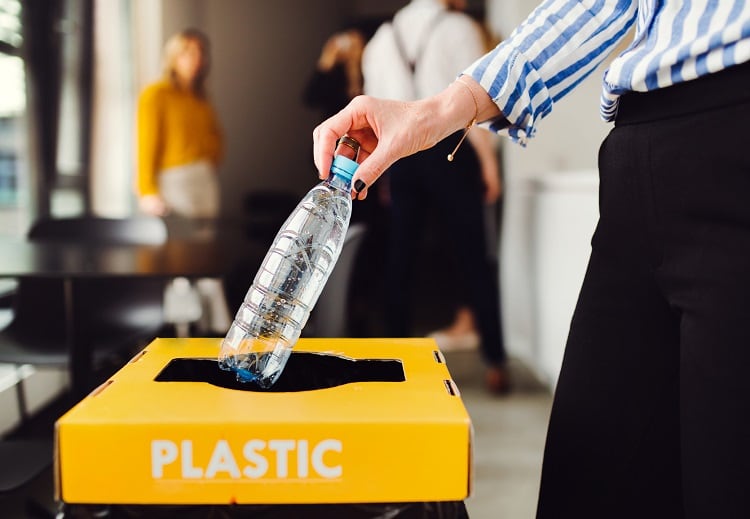Achieving a circular economy in packaging means more than increasing the amount of rPET in bottles and limiting the amount of virgin plastic employed by food and beverage manufacturers.
It also means ensuring that post-consumer plastic packaging waste is recycled correctly. Current sorting systems, however, coupled with consumer confusion over what is recyclable or not, act as barriers to achieving this.
According to Plastics Recyclers Europe, just 42% of plastic packaging waste is recycled in Europe.
In an effort to change these statistics, the European Brands Association (AIM) – a lobby group representing brand manufacturers across the bloc – is facilitating a pilot project centred around digital watermark technology.
More than 88 companies have partnered with AIM on the initiative, including Arla Foods, The Coca-Cola Company, Danone, General Mills, Kellogg, The Kraft Heinz Company, Mondelēz International, Nestlé, Tetra Pak, and Unilever.
“It is terrific to see such enthusiasm from across the industry and to be able to unite such expertise from the complete packaging value chain, from brand owners and retailers to converters, EPR schemes, waste management systems, recyclers and many more,” said AIM Director General Michelle Gibbons.
“Collaboration is the way forward to achieve the EU’s circular economy goals.”
What is a digital watermark?
Digital watermarks are the size of a postage stamp and cover the surface of consumer goods packaging.
Described by AIM as ‘imperceptible codes’, the watermarks can carry a ‘wide range’ of information about a product. These could include the manufacturer, SKU, type of plastics used and composition for multilayer objects, and whether the product falls under the food or non-food category.
The partnership hopes that when packaging carrying a digital watermark enters a waste sorting facility, it can be detected and decoded by a high resolution camera on the sorting line. The line would then sort the packaging into streams according to its attributes.
“This would result in better and more accurate sorting streams, and thus consequently into higher-quality recyclates, benefiting the complete packaging value chain,” noted the trade association.
“Next to this ‘digital recycling passport’, digital watermarks also have the potential to be used in other areas such as consumer engagement, supply chain visibility and retail operations.”
HolyGrail 2.0
Digital watermarks were first discovered under the Ellen MacArthur Foundations’ New Plastics Economy programme. The recently launched pilot project, titled HolyGrail 2.0, aims to build the technology’s scale and scope.
First, the technology will be validated at a test sorting facility on a semi-industrial scale. Packaging and technology suppliers will work with brand owners and retailers to modify their packaging with digital watermarks.
Next, the partnership aims to upscale to industrial testing. This would involve introducing digitally watermarked packaging from brand owners and retailers into national test markets.
“The three key ingredients here are innovation, sustainability and digital, combined to achieve the objective of the Green Deal towards a clean, circular and climate neutral economy,” said AIM’s Gibbons.
Four brand owners have elected to join the project’s leadership group: Nestlé, P&G, Danone, and PepsiCo.
Of HolyGrail 2.0, PepsiCo Europe CEO Silviu Popovici said: “Effective sorting of waste is a barrier to wider recycling of packaging materials in Europe. This industry-wide challenge can only be resolved through working together for a system-wide solution.
“Developing digital watermarks for packaging is a prime example of how collective action and technology can advance a circular economy.”





